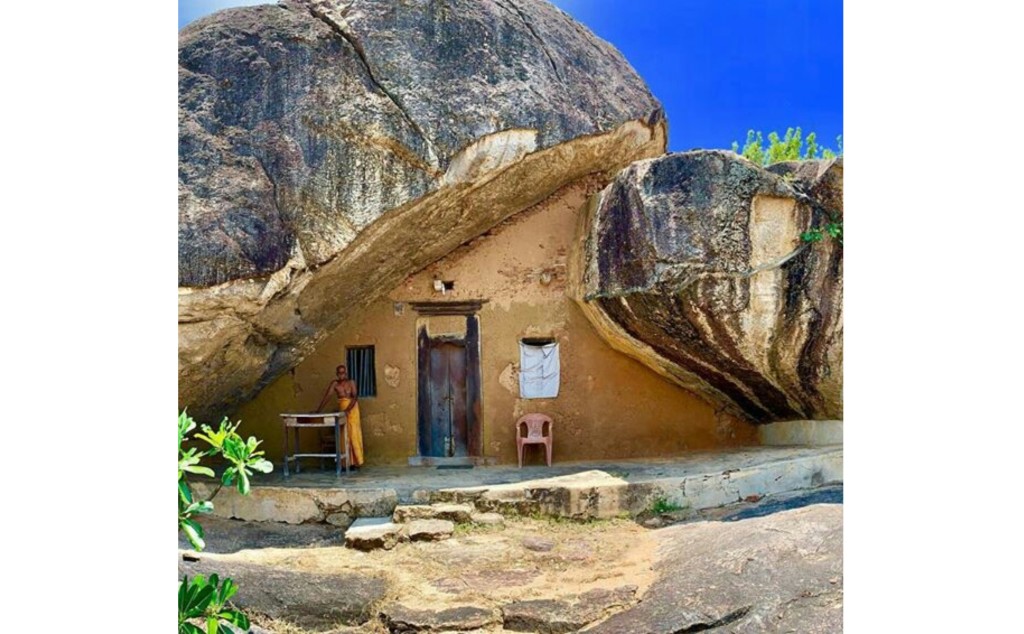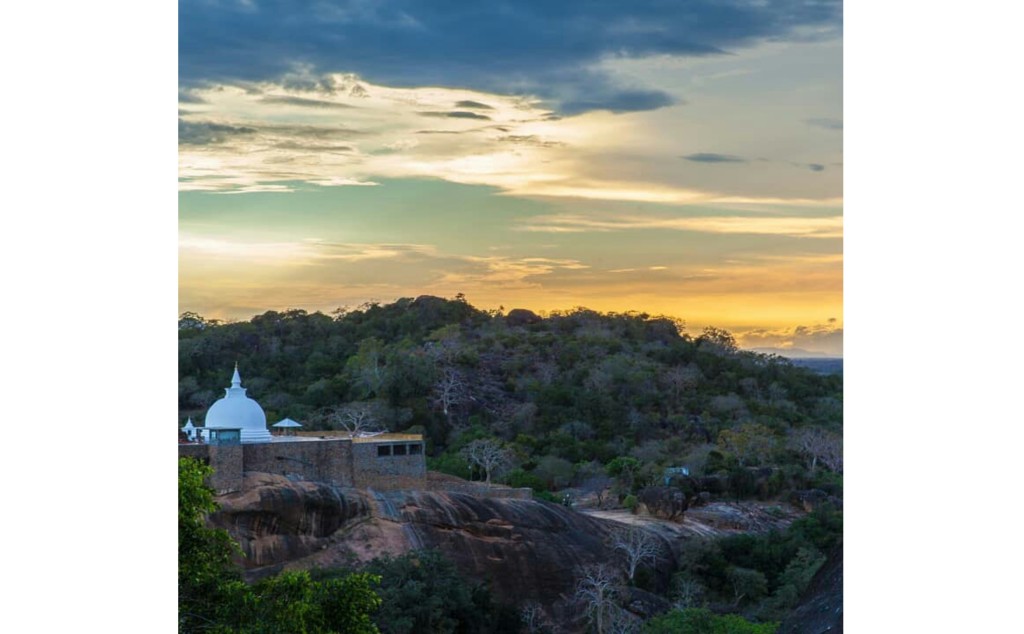Yala National Park is at the top of the bucket list for travelers looking to journey into the wild. Yala may be teeming with exotic wildlife and flora but it is also home to the Situlpawwa Rock Temple, located smack dab in the middle of the park. The temple is home to an intricately designed complex of caves, “dagobas”, ponds and chapter houses. Each cave depicts rare and eye-catching murals that date back to ancient times. If you’re looking for a place that bears historical significance and where peace and wilderness co-exist harmoniously, Situlpawwa Temple is a must-visit. Here are a few lesser known facts about this ancient temple that draws the interest of nature enthusiasts and history buffs alike:

Photo Credits: Chandima
1. The Hill of the Quiet Mind
Located in Kirinda in the Hambanthota District, Situlpawwa temple’s name is derived from the word ‘Chittalapabbata’ found in ancient texts. This translates to ‘the hill of the quiet mind’. Stone inscriptions have identified this location as “Chithala Paawatha Vehera”. The temple complex is attributed to King Kavanthissa who ruled the southern area of the country and is widely believed to have been home to over 12,000 ‘arhats’ or Buddhist monks many centuries ago, each of whom had attained the highest level of peace. Folklore says that a novice monk by the name of Tissa who had reached the state of Arhat resided here. A stupa was built later encasing his remains. Therefore, this location also has been called “Tissa Thera Chetiya”. Travellers seeking to re-discover themselves in nature will find Situlpawwa temple to provide the ideal conditions for meditation and luxury. Out of all the Yala hotels Sri Lanka is home to, Cinnamon Wild Yala is the preferred choice for travelers seeking an escape where they can bask in the lap of luxury while exploring the beauty, Yala National Park and the Situlpawwa temple have to offer.
2. A haven of treasure and ancient paintings
A significant number of valuable items has been discovered from the excavations that have taken place on this site. These include an image of the Goddess Thara in a seating position and an array of Buddha statues. There are two statues of the Awalokeswara Bodisattva that can be seen in the main cave temple, one of which is dressed as a royal and the other that is dressed up as a sage. The temple is also home to many ancient paintings, thought to have belonged to the 3rd century BC. These drawings have been drawn on a very thin layer of plaster on the rock surface using primarily red or yellow colors.

Photo Credits: Clementine
3. Rock inscriptions dating back to the Pre-Christian Era
Along with the main Situlpawwa stupa, another hill called ‘Small Situlpawwa ’ contains similar stupas and buildings. These stupas built on each peak of this rocky mountain range date back to the Pre-Christian Era. Some of the inscriptions mention the names of two of the ‘Dasamaha Yodhayan’ (also known as the ten giants in the Army of King Dutugemunu) called Nandimithra and Welusumana.

Photo Credits: tgr_life
4. Secrets of ancient Sri Lanka
Ancient stone inscriptions found within the vicinity of the temple reveal a lot about ancient Sri Lanka. Some of these stone inscriptions say that King Mahallaka Naga had built stupas and donated land to the temple while the regional King Dappula of Rohana had, in 659 AC, donated a village named Gonmitigama. This village has been identified as “Gonagala” today.
5. Architecture ahead of its time
The Situlpawwa temple boasts of some of the most beautiful and intricate architecture and this is one of the main facets of the temple that draws hordes of crowds to the site every year.
It features large numbers of stupas, cave temples, Buddha statues, stupa houses and image houses spread over a vast expanse of land. The main stupa was built by flattening the top of a very rocky mountain. Stone steps were hand-cut from the south and the north while the boundary walls of the maluwa region were built using large rocks. The longevity of the stupas is a testament to the architectural genius of those who built the temple from the ground up, all those centuries ago.

Photo Credits: Cecil Perera
Sri Lanka excursions are famed for the natural beauty and places of historical significance travelers can discover along the way. The ambience and history of the Situlpawwa temple is perfectly suited for those seeking peace, quiet and to learn more about Sri Lanka. What better way to do it than to curate a holiday around experiences and places that are famed for meditative bliss and tranquility?
Author: Fathima Anissa
